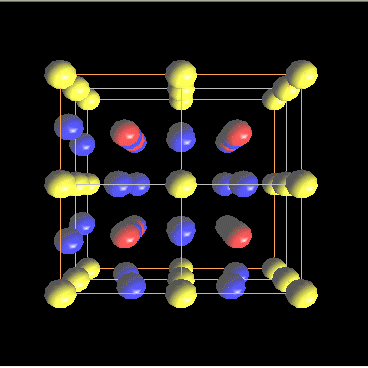
Lattice Dynamics
The study of lattice dynamics is the most powerful tool to determine interatomic interactions and chemical bonding in solids. The phonon dispersion, i.e. the wavevector dependence of phonon frequencies reflects the whole variety of microscopic forces.Experimental information about lattice vibrations is usually obtained using optical techniques like infrared or Raman spectroscopy. Both methods are, however, restricted to the long wavelength, or zero wavevector (q=0) phonons. Inelastic neutron scattering yields access to the whole Brillouin zone and allows in general to determine each individual phonon mode.
In our group, we use both, Raman spectroscopy as a home-laboratory technique and inelastic neutron scattering as a method that is confined to large-scale research facilities like nuclear research reactors or spallation sources.
The Raman triple-spectrometer T64000 is one of the most versatile instruments suitable to investigate even low-lying phonon modes such as soft-modes near phase transitions, e.g.. Inelastic neutron scattering, on the other hand, has a long tradition in our group. The three-axis neutron spectrometer UNIDAS was built at the FRJ-2 reactor in Jülich and operated over a long period of time qas a typical user-instrument. Presently, we are engaged in the instrumentation of the new neutron source FRM-II in Garching. Here, we develop a new, next generation three-axis spectrometer called PUMA, which will be one of the most powerful instruments of this type worldwide.
The experiments are always accompanied by model calculations. The program package UNISOFT allows to calculate the phonon dispersion for arbitrary crystals using a phenomenological representation of interatomic interactions. Moreover, this program helps to optimise experiments since it predicts the scattered intensities for arbitrary Brillouin zones.

Institut für Physikalische Chemie Tammannstrasse 6
37077 Göttingen
| eMail: | geckold@gwdg.de |